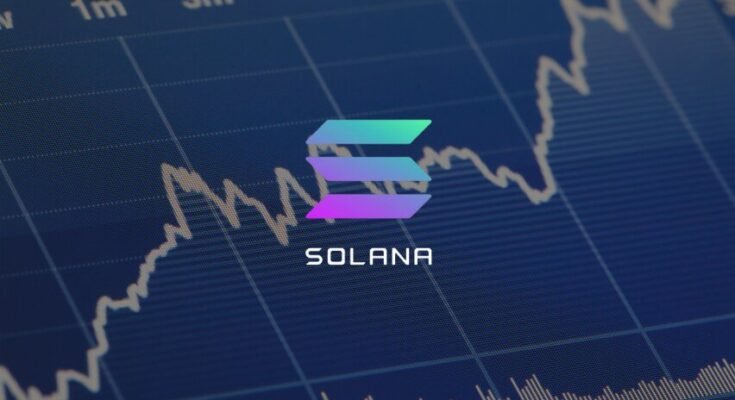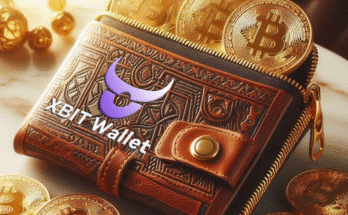The world of cryptocurrency can be both exhilarating and overwhelming, especially when you are trying to navigate through various tokens, wallets, and exchanges. One of the most commonly traded cryptocurrencies today is Solana (SOL). It has gained significant traction due to its scalability and fast transaction speeds. If you’re holding Solana and are looking to convert it to USD, you’re not alone. Whether you’re looking to cash out profits, make a purchase, or simply exchange it for another asset, it’s crucial to understand the process, risks, and best practices before converting Solana to USD.
What Is Solana?
Before we dive into the process of converting Solana to USD, it’s important to first understand what Solana is. Solana is a high-performance blockchain platform designed to offer fast and scalable decentralized applications (dApps) and cryptocurrencies. Unlike Bitcoin or Ethereum, which face scalability issues due to their consensus mechanisms, Solana uses a unique proof-of-history (PoH) system combined with proof-of-stake (PoS), enabling faster and cheaper transactions. It has rapidly become a go-to solution for decentralized finance (DeFi) applications and NFT markets, among other blockchain-based innovations.
Since its launch in 2020, Solana has gained considerable attention, and its price has fluctuated significantly. As of recent times, Solana has been one of the top 10 cryptocurrencies by market capitalization. As with any cryptocurrency, the value of Solana can change quickly, making the timing of conversion important.
Why Convert Solana to USD?
There are several reasons you might want to convert Solana to USD:
- Profit Realization: If the value of Solana has risen since you bought it, you may want to sell some or all of your holdings to lock in profits.
- Cash Flow Needs: If you need to pay for goods or services in USD, converting your crypto holdings to cash is the easiest way to get the currency you need.
- Diversification: Some people convert their cryptocurrencies into USD to reinvest in other assets such as stocks, bonds, or real estate, thus diversifying their investment portfolio.
- Market Volatility: Cryptocurrencies are known for their volatility. If you’re looking to reduce your exposure to crypto, converting Solana to USD could help you mitigate risks.
How to Convert Solana to USD
There are several methods to convert Solana to USD. Each has its pros and cons, and understanding them is crucial for making the right choice.
1. Using Cryptocurrency Exchanges
The most common way to convert Solana to USD is through a cryptocurrency exchange. Platforms like Coinbase, Kraken, Binance, and Gemini allow you to sell your Solana and convert it into USD. Here’s how the process generally works:
- Create an Account: If you don’t already have an account on a cryptocurrency exchange, you’ll need to sign up and complete any required verification steps.
- Deposit Solana: Once your account is set up, deposit your Solana tokens into the exchange’s wallet. Each exchange provides a unique deposit address for Solana.
- Sell Solana: Once the tokens are in your account, you can place a market or limit order to sell Solana for USD. A market order sells at the best available price, while a limit order lets you set a preferred price.
- Withdraw USD: After selling your Solana, you can withdraw the USD to your linked bank account. Depending on the exchange, this could take a few hours to a few days.
Pros:
- High liquidity on popular exchanges
- User-friendly interface
- Ability to hold USD in your exchange account for future use
Cons:
- Transaction fees, which can vary by exchange
- Withdrawal fees when transferring USD to a bank account
- Some exchanges may have withdrawal limits or delays
2. Using Peer-to-Peer (P2P) Platforms
For those looking for a more direct approach, peer-to-peer platforms like LocalBitcoins or LocalCryptos allow you to trade Solana directly with other users in exchange for USD. These platforms connect buyers and sellers, and you can choose to meet in person or transfer funds digitally.
- Find a Buyer: Search for offers where sellers are willing to pay in USD for Solana.
- Negotiate Terms: You and the buyer can negotiate the price and method of payment. Some P2P platforms also offer escrow services, which protect both the buyer and the seller.
- Complete the Transaction: Once you agree on the terms, you transfer Solana to the buyer, and they send you the USD via your preferred payment method.
Pros:
- More flexible payment options (e.g., PayPal, bank transfer)
- Potentially lower fees compared to exchanges
- Direct control over the transaction
Cons:
- Can be riskier without proper verification or escrow services
- Limited buyer pool, especially for Solana in some regions
- Longer transaction times if no buyer is immediately available
3. Using ATMs or Bitcoin Debit Cards
Some cities and regions have cryptocurrency ATMs that allow users to convert Solana (or other cryptocurrencies) directly into fiat currencies. These machines typically only support major cryptocurrencies like Bitcoin and Ethereum, but Solana may be available on some of these ATMs as the ecosystem grows.
Alternatively, crypto debit cards like those offered by Crypto.com or BitPay allow users to load their crypto holdings onto a card that automatically converts them to USD when they make a purchase or withdraw from an ATM.
Pros:
- Instant access to USD
- Convenient for on-the-go spending
Cons:
- Limited availability in certain regions
- Higher fees for conversion and ATM withdrawals
4. Over-the-Counter (OTC) Trading
For large investors or institutions, Over-the-Counter (OTC) trading is a popular option. OTC trading allows high-volume transactions to be executed directly between buyers and sellers, without affecting the market price. OTC desks often offer more personalized services for larger transactions and can ensure you get the best possible rate.
Pros:
- Best for large transactions
- Avoids slippage that can occur on exchanges with high volatility
- Typically, it is more secure for large amounts of crypto
Cons:
- Not available to retail investors
- Higher minimum transaction requirements
Factors to Consider Before Converting Solana to USD
Before you convert your Solana to USD, it’s important to consider a few factors:
- Market Conditions: The price of Solana can fluctuate significantly. If you’re planning to convert, check the current market trends and, if possible, wait for a favorable price.
- Transaction Fees: Different exchanges and platforms charge different fees for converting and withdrawing funds. Be sure to compare fees across platforms to get the best deal.
- Tax Implications: Converting cryptocurrency to fiat currency like USD may have tax consequences, as profits from crypto sales are often subject to capital gains tax in many countries.
- Security: Ensure you are using a secure platform to avoid fraud or hacking. Choose exchanges with good reputations and consider using cold storage for your assets if you’re not actively trading.
Conclusion
Converting Solana to USD is a relatively straightforward process but requires some understanding of the available platforms and potential risks. By using cryptocurrency exchanges, P2P platforms, or crypto debit cards, you can quickly and efficiently convert Solana to USD. However, always consider transaction fees, market conditions, and tax implications before making a decision. With the right knowledge and tools, you can confidently convert your Solana and manage your crypto portfolio effectively.




